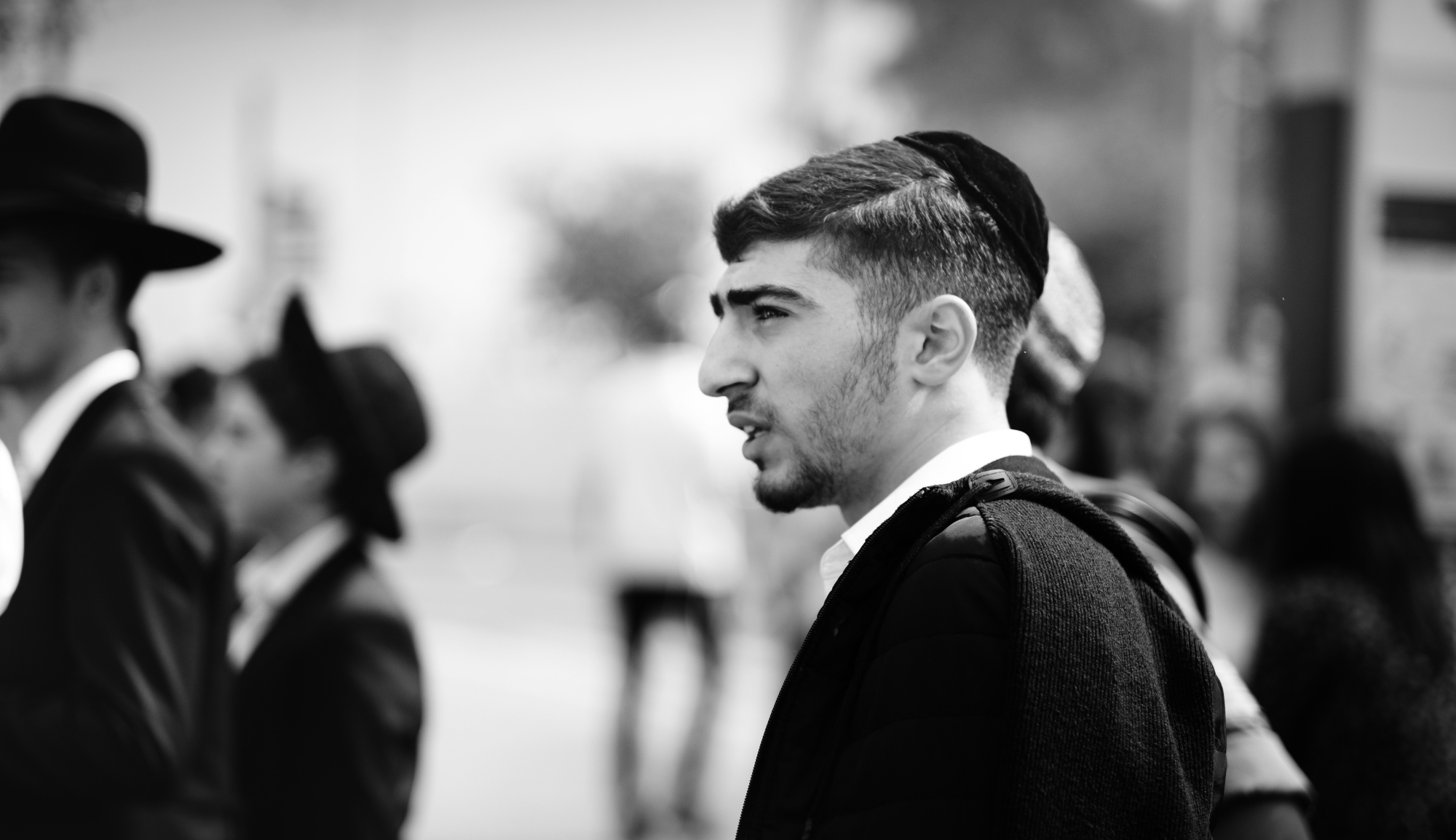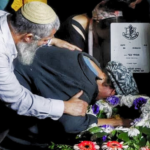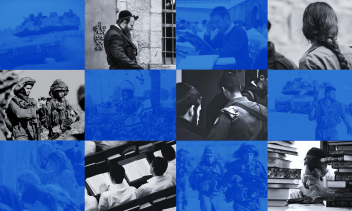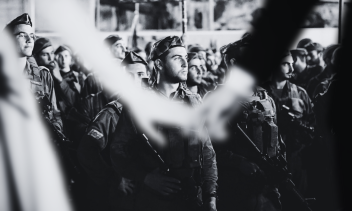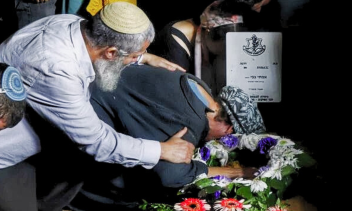In a seminal paper, “The Ideology of Hesder” (Tradition 19:3, Fall 1981), penned close to 40 years ago, Rav Aharon Lichtenstein zt”l mapped out his view and vision of Yeshivot Hesder. As described in the opening remarks, a male religious high school graduate can typically choose between enlisting to the IDF for 32 months, as is mandated by Israeli law, excusing himself from military service on the grounds that “Torah is his [full-time] vocation,” or he can join a Yeshivat Hesder. The last option entails spending five years in yeshiva, with a stint of a year and four months training and serving in the IDF.
A critical part of the paper portrays the Hesder program as a fulfillment of both aspirations of the student: the moral outlook, which requires a person to participate in the protection of his family, his country and his homeland—alongside his fierce desire to dwell in the tent of Torah. With bold strokes of his pen, Rav Aharon emphasized that Hesder is not the product of a compromise between the demands of the State and the desires of the religious society. Rather, it is an ideal to combine different values that are in the focus of the religious experience. Combining the desire to study Torah, and the moral will to take part in the protection of the State of Israel is the true calling of the religious person.
With an analytical and critical eye, Rav Lichtenstein enumerated the challenges facing the student who chooses to serve as part of a Hesder program, emphasizing the tension between values that may sometimes contradict each other, with the army on one hand and yeshiva on the other. These are frameworks that have sets of principles, language, and values which tug in totally opposite directions. Rav Lichtenstein neither obscured nor dulled these difficulties, and with intellectual honesty admitted that it is a “small wonder that many only achieve the balance imperfectly.” However, the partial success does not dim the importance of the Hesder, which in Rav Lichtenstein’s view, should be assessed based on its myriad successes and contributions to Jewish life and learning in the State of Israel.
A considerable part of the essay is devoted to countering the claims of those opposing the Hesder program, claiming that while military service is important, Torah scholars are nevertheless exempt from carrying this burden. Rav Lichtenstein addressed the supposed proofs to this claim, including the halakhic discourse surrounding the Talmudic statement “Rabbis do not require protection” (Bava Batra 8a), or Rambam’s assertion that a person who dedicates his life to Torah and worship, is likened to the tribe of Levi, and exempt from participating in war (Shemitta veYovel 13:13). Rav Lichtenstein refuted each and every claim as irrelevant to the questions of serving in the IDF. Moreover, he showed how the idea of Yeshivat Hesder is a continuation of the historical model of a combination of Torah and warfare already from the days of Moses and Joshua.
The paper ends with the echoing proclamation, “Standing in tears atop Har Hazeitim, the bleak sight of kol hamekudash mehavero harev yoter mehavero stretching before him, what would the Ramban have given to head a Yeshivat Hesder?”
King David asks the Almighty to have the right to “visit (ule-vaker) his Temple” (Psalms 27:4). In his interpretation of this verse, Rashi cites a dispute between two of the greatest medieval Hebraists. Dunash ben Labrat connected the verb b-k-r to the noun boker (morning), interpreting the request as a hope of a daily visit to the Temple. Menahem ben Saruk, on the other hand, expounded the verb as a process of examination and testing. I thank the editors of Tradition who invited me to enter the Kodesh and dwell within the words of mori ve-rabbi Rav Aharon Lichtenstein. With God’s help, I will tread with the proper respect of a student entering his master’s home, and I will attempt to accomplish both aspects of the “ule-vaker.” At once a visit in which the guest is looking at the treasures of his host in awe and admiration, while at the same time attempt to not allow the genuine awe to prevent a degree of scrutiny, in order to assess R. Lichtenstein’s essay now with the distance of many decades.
As for the first “bikur,” a nostalgic visit, I will stroll down memory lane to my youth. I grew up in Jerusalem in the Religious Zionist community. For high school, I attended Netiv Meir, one of the best yeshiva high schools in Israel. I was a member of religious youth movements and participated in various frameworks of study and dialogue between religious and secular. We were Zionists by ideology, and we were religious, and it was clear to us that our Zionism was linked to the religious world, but we didn’t know exactly how to give it expression (beyond saying Hallel on Yom Ha’atzma’ut with a berakha!). Looking back, our Zionist ideology was closer and clearer to us, while our religious identity as bnei Torah was much more muddled and foreign. In seminars the oft-asked question “what defines you best: being a Jew, an Israeli, or a member of humanity” generated much debate – and as young men our answers were unclear. Indeed, at the end of high school, a significant group of my peers left the religious world but remained avid Zionists. This quandary has many reasons, and this is not the place to enumerate them, but unquestionably one is the fact that we had not encountered, as young students, a significant amount of rabbis who presented the Religious Zionist worldview. Most of our teachers and educators came from the Haredi world. They often demonstrated deep contempt for the Zionism we so valued. They did not see us as the generation of redemption, nor did they see God’s hand in the historical movements of the previous two generations. Subliminally they tried to change and shape our world according to their ideal that Torah study was the only significant value. As students, we walked around with the feeling that our spiritual leaders expected us to choose between the world of Torah and the world of Zionism. I should note that the picture was not uniform; there were a few rabbis we met who offered another vision. Rabbi Shlomo Aviner, for example, whose weekly shiurim drew a great number of students, or a few teachers in Netiv Meir who were graduates of Yeshivat Mercaz HaRav, tried to tip the scale, but generally speaking the choice was clear—Torah or Zionism.
While there were already a small number of Hesder Yeshivot, the feeling was that in some sense they were second best. If a student were really serious, he would go to a “Yeshiva Kedosha” and invest all his time and energy to Torah, in place of some “arrangement” allowing him to also serve in the army. A person who decided that a life of total dedication to Torah was not for him, that is, one who wanted to study Torah, to also serve in the IDF, and then perhaps turn to academic studies, was offered the “second best” option – a Hesder Yeshiva.
Read the full piece on Tradition and Rav Lichtenstein’s original essay here.
This essay was originally published in November 2019 as “Looking Back: The Ideology of Hesder Revisited.”

